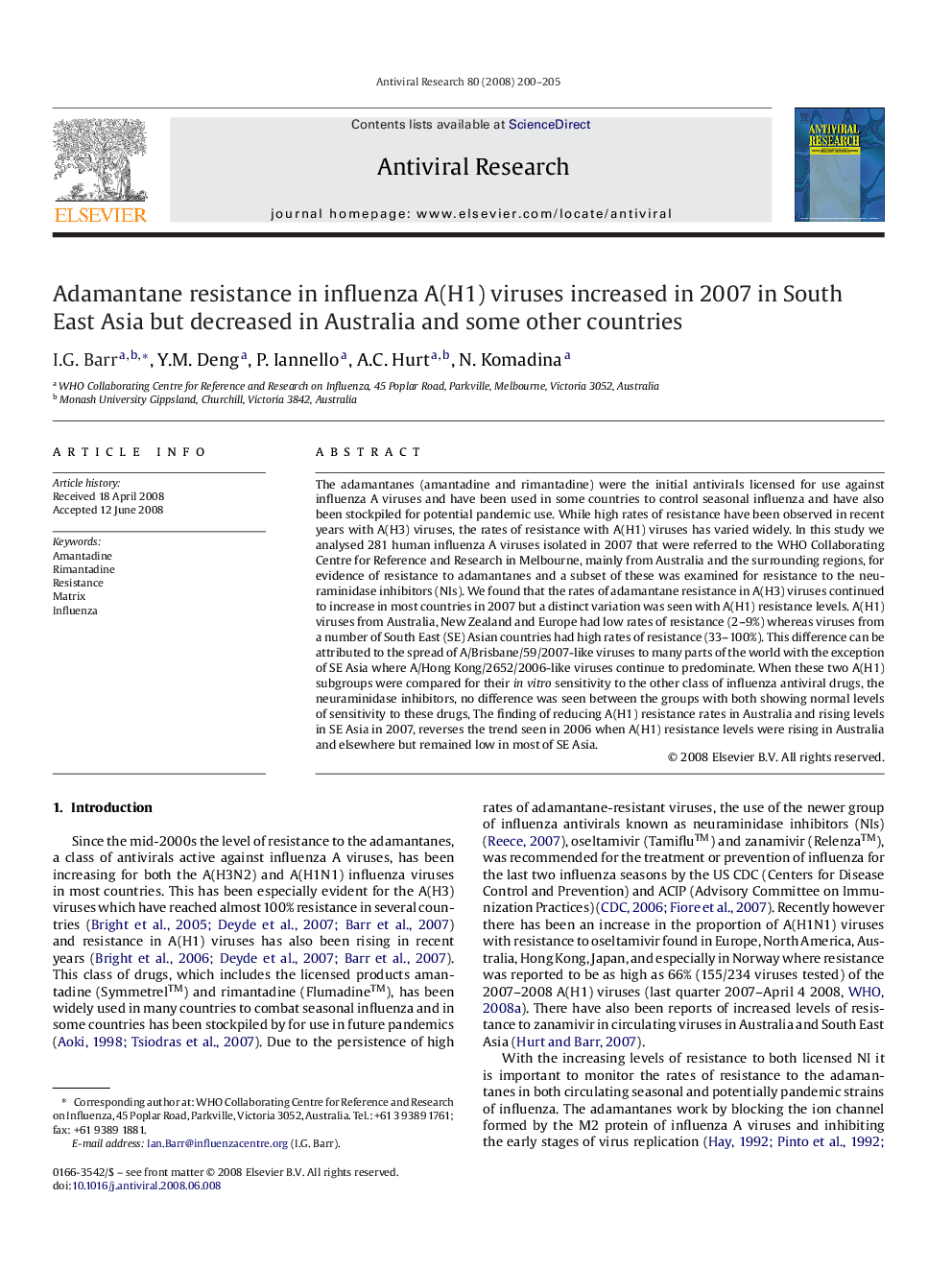| Article ID | Journal | Published Year | Pages | File Type |
|---|---|---|---|---|
| 2511075 | Antiviral Research | 2008 | 6 Pages |
Abstract
The adamantanes (amantadine and rimantadine) were the initial antivirals licensed for use against influenza A viruses and have been used in some countries to control seasonal influenza and have also been stockpiled for potential pandemic use. While high rates of resistance have been observed in recent years with A(H3) viruses, the rates of resistance with A(H1) viruses has varied widely. In this study we analysed 281 human influenza A viruses isolated in 2007 that were referred to the WHO Collaborating Centre for Reference and Research in Melbourne, mainly from Australia and the surrounding regions, for evidence of resistance to adamantanes and a subset of these was examined for resistance to the neuraminidase inhibitors (NIs). We found that the rates of adamantane resistance in A(H3) viruses continued to increase in most countries in 2007 but a distinct variation was seen with A(H1) resistance levels. A(H1) viruses from Australia, New Zealand and Europe had low rates of resistance (2-9%) whereas viruses from a number of South East (SE) Asian countries had high rates of resistance (33-100%). This difference can be attributed to the spread of A/Brisbane/59/2007-like viruses to many parts of the world with the exception of SE Asia where A/Hong Kong/2652/2006-like viruses continue to predominate. When these two A(H1) subgroups were compared for their in vitro sensitivity to the other class of influenza antiviral drugs, the neuraminidase inhibitors, no difference was seen between the groups with both showing normal levels of sensitivity to these drugs, The finding of reducing A(H1) resistance rates in Australia and rising levels in SE Asia in 2007, reverses the trend seen in 2006 when A(H1) resistance levels were rising in Australia and elsewhere but remained low in most of SE Asia.
Related Topics
Life Sciences
Immunology and Microbiology
Virology
Authors
I.G. Barr, Y.M. Deng, P. Iannello, A.C. Hurt, N. Komadina,
